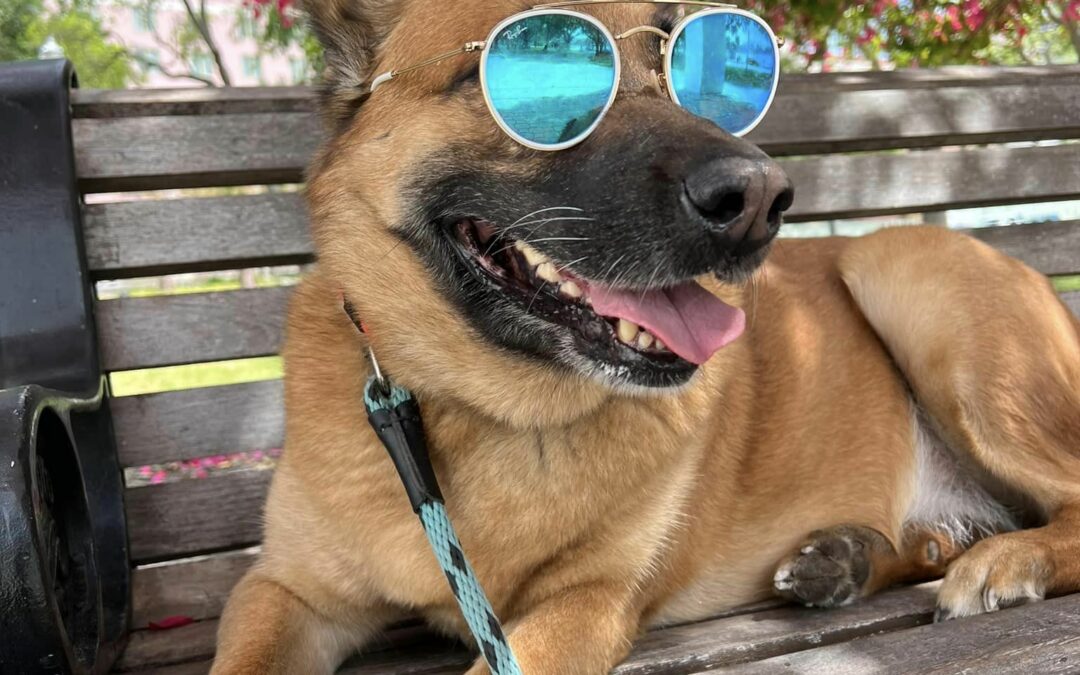Combating training tool shame and negativity l is important to ensure the go-home process for you and your dog is as smooth and easy as possible.

Training Tool Narratives
Picture this, your dog recently graduated from one of our training programs and is fresh returning home. Due to rough trips to the park and bad experiences for both parties in the past, you’re still trying to build the courage to take your dog out in public. With your trainer’s words of encouragement ringing in your ear, you get geared up for a trip to the park. This process includes a prong collar on your dog and a treat pouch on yourself.
Once there, you steadily work your dog through a few commands. While rewarding when appropriate and correcting when needed, you notice your confidence slowly grow. You both walk proudly, strutting around the park in sync. You are finally on the right path with training. You look like the trainers did in the videos with your dog!
A few minutes later, your dog becomes aroused over another dog. You give an appropriate correction and redirect them to an obedience command. Another person overlooking scoffs at you and cruelly remarks about your dog’s equipment. Suddenly, your confidence vanishes, and you are unsure how to respond, confusing you about the encounter.
Negative Opinions
Nothing is more discouraging than being out with your dog maintaining their obedience training and a random person expressing their opinion without knowing the full spectrum about the training tools on your dog.
It doesn’t even have to be a training tool that causes upsetting for others. I’ve had clients call and vent that other family members or guests “feel bad” the dog had to remain in a place while they ate dinner. They spend the entire dinner saying, “Awe, poor dog.”
Some people think the obedience itself is “mean.” Once out in the town, a stranger told me it’s sad that my dog doesn’t get to greet any dogs walking by. The dog I was training was aggressive and had a bite history!
Trending dog culture and other people’s opinions have no place in knowing what is best for your dog. These scenario happens to us all the time as trainers but seems to cause shame or guilt for pet clients.
Here are some responses to help empower you if this happens. Say them confidently and remember how far your dog has come and, more importantly, what the future holds!
Helpful Phrases to Use:
- “Training tools have given us freedoms such as taking my dog to town with me rather than leaving them home.”
- “This prong collar or head halter helps me to regain my confidence. I got pulled down from my dog in the past.”
- “My lack of dexterity trying to restrain my dog is insufficient to control my dog’s impulses. This collar helps me with my limitations.”
- “My dog’s safety is my main concern, and reinforcing rules and boundaries, especially in public, keeps everybody safe and in control.”
- “It is my job to ensure my dog is fit for the community, and these tools help to ensure that.”
- ” The trust and bond created through training tools have only deepened my relationship with my dog.”
Combatting Training Tool Shame
We always attempt first to educate if the person is open to discussion, but do not defend yourself. You are not doing anything wrong. Most of the time, the person has had a bad experience with the tool. Don’t be discouraged if they are not open to a conversation. Many people are set in their opinions and only want to push them on anybody else who thinks differently.
The key is not feeling shame or guilt and trusting the complete training process. As we discussed, training tools eventually have an exit strategy, and the random stranger or family member who opposes them doesn’t get to dictate that plan. Be confident in remembering what led you to seek training in the first place and that consistency in reinforcing the new skill set is critical to not depending on the tools in the future.
Dogs learn in pictures and are used to doing certain old behaviors with owners. Training tools support a successful transition between trainer and owner for accountability. Remember, the critical component that provides the exit strategy of training tools is your consistency in reinforcing the training commands when your dog returns. Another determination is your dog’s maturity. You only have control over the first factor! An immature, excitable dog may need more extended reminders in stimulating environments. Take time with the transition process; don’t let others pressure you.
Friends and Family
Unfortunately, it’s a bit harder with friends and family around the dog’s home environment. The standard created with your dog should remain consistent with all house members, even if somebody in your home disapproves of using your dog’s training tools. If another family member consistently takes off the equipment or doesn’t hold the dog accountable for commands, it only prolongs the use of the tools.
Explaining correction for the sake of a loved one’s relationship is better for the dog than avoiding the conflict and removing the training tool instead. It’s a problem many folks face within their walls. The best way to handle this conundrum is to include the hesitant family member in the transition lessons and group classes with the trainer. If the family member or friend is not open to it, they should only interact with the dog once all the training has transferred, and the dog is reliable without the training tools.
In most cases, the dog prefers to follow the family leader after training because they find a new purpose through obedience and commands. Dogs with a lower work ethic choose the person who asks the least of them. In either case, the family must have a standard agreement about why the dog was sent for training and the benefits of the process.
Training Tool Freedom
Here at the Doghouse, we emphasize the freedom that training tools such as the off-leash collar can provide. If you want to reassure yourself of the validity of tool use, just look at the freedom and happiness offered by these tools.
Training tools are like training wheels on a bicycle. With consistency after the program and maturity on the dog’s part, they have an exit strategy. You will master this process when you and your dog are so in sync that the confidence in the commands maintains the training.
A random stranger or a family member’s opinion should not dictate the end result. This is your lifelong companion; you know what is best for you both!
This blog is for graduates of our Full Service Training Program. There are many opinions about the use of training tools for dogs. Any client that comes for a Meet and Greet is thoroughly educated about training tools, the psychology behind each one, and the training plan explicitly outlined for their dog. The Doghouse, LLC tailors our programs to each dog, and one method does not work for all dogs.



